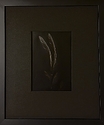ParkerSmithPhoto
Member
Doesn't apply. A commonly parroted myth in photography is that there is a lot involved in "mastering" a film/developer. It's ridiculous.
For every awesome photographer who has used only [ ] for 200 years, there is an awesome photographer who uses several films depending on what is available. There simply is not all that much involved in mastering a film. In addition, film/development really isn't where most of the control is. The control is under the enlarger (or in whatever digital editor). That is where most of the craft is.
Michael Kenna once said that he buys whatever roll film is easily available wherever he happens to be working. He shoots a ton of film.
He also said something about processing everything in D76 for 11 minutes. Hard to argue with the results.
I think with most photographers you could pile up their prints and you really wouldn't be able to tell one film from another. I've shot tons of different brands (with at least 6 different developers) over the past 20 years and you'd be hard pressed to tell what was what. Even FP4 and HP5 are so close that you really have to know what you're looking for to see the difference.






